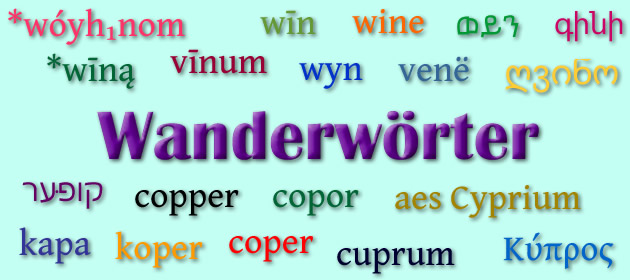
Here’s a recording in a mystery language.
Do you know or can you guess the language?
What is the difference between envy and jealousy?
A friend asked me this, so I thought I’d write a post about it.
Envy means:
In the past it meant:
It comes from the Middle English envie (ill-will, hatred, enmity, spite, malice, envy, harm, eagerness), from the Old French envie, from the Latin invidia (envy, grudge, jealousy, prejudice, spite, odium), from invidus (envious, hostile, inimical), from invideō (I look askance or maliciously at, cast an evil eye upon), from in- (on, upon, after) and videō (see, observe, understand) [source].
Jealousy means:
In the past it meant “A close concern for someone or something, solicitude, vigilance.” [source]
It comes from the Middle English jalousie (jealousness in a relationship, passion, desire, zealousness, devotion, belief), from the Old French jalousie, from jalous (eager, zealous, jealous), from the Late Latin zēlōsus (jealous, zealous), from the Latin zēlus (zeal, emulation, jealousy), from the Ancient Greek ζῆλος (zêlos – eager rivalry, zealous imitation, emulation, a noble passion) [source].
Other words from the same Ancient Greek root include zeal (diligent enthusiasm; powerful interest) and zealous (full of zeal; ardent, fervent; exhibiting enthusiasm or strong passion) [source].
There’s a genre of Japanese stories known as 異世界 (isekai), which means “different world” or “otherworld”. They usually involve a person or people being transported from our world to a fantasy or virtual world, or to a parallel universe. Such stories appear in the form of novels, films, manga, anime and video games.

There are two main types: one in which the main character is transported to another world by magic, divine intervention or other means, and another in which the character dies in our world and is reincarnated in another world. The former are known as 異世界転移 (isekai teni), or “transition into another world”, and the latter as 異世界転生 (isekai tensei), or “reincarnation into another world” [source].
Such stories, or similar ones, are also found in other languages, including English, and have been around for a long time. Recently I’ve been reading some of them, mainly in the form of web serials. In the descriptions of such serials, the term isekai often pops up, which is why I thought I’d look into it in this post.
As a linguist, one aspect of such stories that interests me is how the characters manage to communicate with people in the new world they find themselves in. Some writers just have everybody speaking English, or whatever language the main character speaks natively. In some case there are magical, technological or other ways that help the characters communicate, or the main character acquires a skill that helps them to learn the local language(s). Or, the main character finds someone to act as interpreter.
In The Wandering Inn, for example, the main character is magically transported to a different world where everybody speaks English, except the goblins and a few others. So she has no trouble communicating with most people. Some characters have their own writing systems though, which she can’t read.
In Cinnamon Bun the main character finds herself in a different world where people and other creatures speak all sorts of languages, and she is magically able to understand them all and to speak their languages. She can even communicate through dance with the giant bee characters.
In Quill & Still the main character is transported to another world where everybody speaks different languages. The magical system gives her the ability to speak some of them, but she still has to learn about the local culture.
In Beneath the Dragoneye Moons the main character is reincarnated in a different world, so grows up speaking the local language. When she finds herself many thousands of year in the future after spending time in the land of the fae, all the languages have changed and she has to learn new ones. She gains skills to help with this, and meets a character who can act as an interpreter as she speaks all languages, thanks to a skill granted to her by the gods.
Do you know of any other stories, in English or other languages, which are linguistically interesting and worth a read?
If you’re familiar with Japanese isekai, how do characters cope with different languages, or does everybody in the other worlds speak Japanese?
In real life we are unlikely to be transported into a completely different world. However, we can find ourselves in different linguistic and cultural environments by travelling to other countries, or by visiting other parts of our own countries. We have no magic to help us learn languages, but we do have books, courses, teachers, classes and technology.
Words for fish and other seafood seem to pop up quite often in the Japanese lessons on Duolingo. One such word is 鮭 (sake), which means salmon, specifically chum salmon (Oncorhynchus keta), a species of salmon that lives in the North Pacific and the Beringian Arctic. It is also known as the dog salmon, Siberian salmon, keta salmon, or silverbrite salmon in North America [source].
The word 鮭 (sake), which is also written 鮏, サケ or さけ, comes from the Ainu word サㇰイベ (sak ibe – salmon), which literally means “summer eat”, as salmon as usually caught and eaten in the summer [source].
The chum of chum salmon comes from the Chinook Jargon word tzum (spotted, marked). The keta of keta salmon / Oncorhynchus keta comes from the Russian word кета (keta – chum/Siberian salmon), from the Nanai word кета (keta – fish) [source].
鮭 [sáꜜkè] should not be confused with 酒 [sàké] (alcohol, sake). In the former the first syllable has a high pitch and the second a low pitch, while in the latter, the first syllable has low pitch and the second a high pitch [source].
Other Japanese words borrowed from Ainu include [source]:
Things can be newfangled, but can they be oldfangled or just fangled?

Newfangled is used, often in derogatory, disapproving or humourous way, to refer to something that is new and often needlessly novel or gratuitously different. It may also refer to something that is recently devised or fashionable, especially when it’s not an improvement on existing things. It can also mean fond of novelty [source].
The word newfangle also exisits, although it’s obsolete. As a verb it means ‘to change by introducting novelties’, and as an adjective to means ‘eager for novelties’ or ‘desirous of changing’ [source]. It comes from the Middle English word neue-fangel, which meant fond of novelty, enamored of new love, inconstant, fickle, recent or fresh [source].
Things that are old-fashioned, antiquated, obsolete or unfashionable can be said to be oldfangled [source]. Things can also be fangled, that is, new-made, gaudy, showy or vainly decorated. Something that is fangled could be said to have fangleness [source].
The word fangle also exists, although it is no longer used, except possibly in some English dialects. It is a backformation from newfangled. As a verb it means to fashion, manufacture, invent, create, trim showily, entangle, hang about, waste time or to trifle. As a noun it means a prop, a new thing, something newly fashioned, a novelty, a new fancy, a foolish innovation, a gewgew, a trifling ornament, a conceit or a whim.
Fangle comes from the Middle English fangelen, from fangel (inclined to take), from the Old English *fangol/*fangel (inclinded to take), from fōn (to catch, caputure, seize, take (over), conquer) from the Proto-West Germanic *fą̄han (to take, seize), from the Proto-Germanic *fanhaną (to take, seize, capture, catch) [source].
Words from the same roots include fang (a long, pointed canine tooth used for biting and tearing flesh) in English, vangen (to catch) in Dutch, fangen (to catch, capture) in German, and få (to get, receive, be allowed to) in Swedish [source].
A Wanderwort is term used in linguistics to refer to a word that has spread to many different languages, often via trade. It was borrowed from German and comes from wandern (to wander) and Wort (word), so it’s a “wandering word”. The plural is Wanderwörter, Wanderworte or Wanderworts [source]. The origins of some such words goes back to ancient trade routes from the Bronze Age, and it can be difficult to trace which language they ultimately came from. Examples include copper, silver, mint and wine [source].

Another example of a Wanderwort is:
tea, which comes from the Dutch thee (tea), from 茶 (tê – tea) in the Amoy dialect of Southern Min (Min Nan), from the Old Chinese *l’aː (bitter plant), from the Proto-Sino-Tibetan *s-la (leaf, tea) [source].
There are similar words for tea in many other languages, including ᑎᕀ (tiy) in Cree, tae in Irish, tī in Maori and టీ (ṭī) in Telugu. These words arrived in Europe and elsewhere thanks to the Dutch East India Company, who brought tea by sea from Amoy [source].
The word chai which in English is short for masala chai, refers to a beverage made with black teas, steamed milk and sweet spices, based loosely on Indian recipes. It comes from from the Hindi-Urdu चाय / چائے (cāy – tea), from the Persian چای (čây – tea), from the Chinese 茶 (chá – tea) [source].
Languages that got their tea overland generally have a word for tea like chai or cha, including цай / ᠴᠠᠢ (tsay – tea) in Mongolian, चाय (cāy – tea) in Hindi, чай (čaj – tea) in Russian, ชา (chaa – tea) in Thai, and ca (tea) in Malay [source].